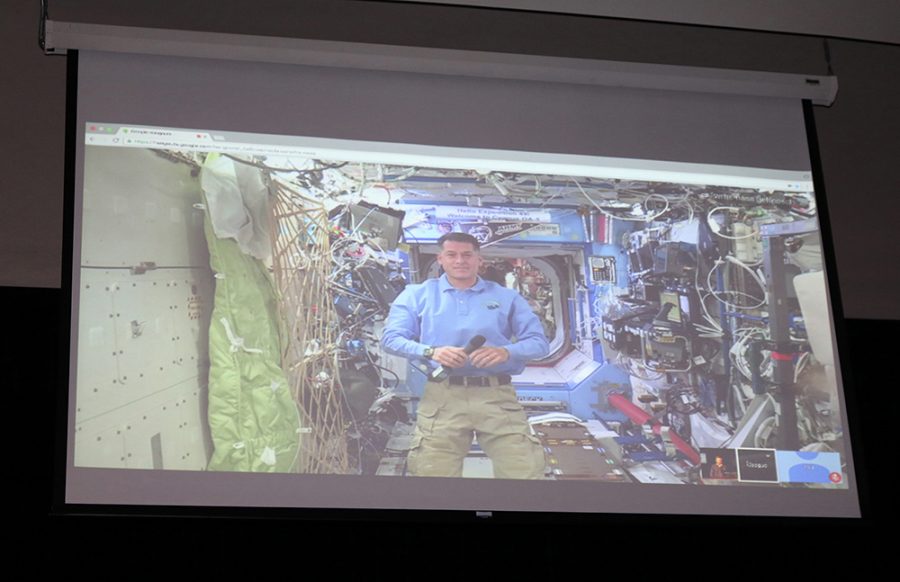NASA Simulink Connects Students to the Stars
December 15, 2016
By Landon Stokes
The International Space Station (ISS), otherwise known as that fast-moving star that streaks across the sky from time to time, was broadcast to our school auditorium on Friday, Nov. 18, and was streamed to both NASA Television and the agency’s website.
Science, Technology, Engineering and Math (STEM) students took turns asking American Commander Shane Kimbrough questions regarding space travel, scientific research aboard the station, and the possibility of life in space.
Aside from an auditorium full of eager high school students, the event was covered by professional media outlets such as CBS and Channel 6 News and featured United States Congressman Ed Perlmutter, who spoke about the event and what it means not only for our school, but schools across the state.
Perlmutter expressed his interest in space exploration and research, announcing, “One of my sub-committees is the Space Exploration Committee… and it’s clearly something important to Colorado where we have such a fantastic aerospace industry,” standing next to a soon-to-be live feed of the ISS, “…and one of the things Colorado is focused on is getting our astronauts to Mars during or before 2033.”
After thunderous applause and some minor technical difficulties, the feed of Commander Kimbrough appeared, grabbing a microphone that was previously floating in mid-air. One-by-one, students approached the podium for the chance to speak with not only a real astronaut, but one who hadn’t even come back to Earth yet. Many of the questions dealt with the big interests, such as experiments the team was performing or the challenge of living in space.
“We haven’t gotten into most of the science we’ll be doing here. We have about 200 experiments to do over the next three to four months, which is really exciting,” Kimbrough happily replied, “…and it’s all going to be used to figure out how to get people to go to places like Mars, like we talked about earlier.”
Of course, scientific questions are certainly interesting, but human curiosity about space applies to its smaller quirks too, giving way to questions regarding the challenges of sleeping in a zero-gravity environment or the kind of antics had over the international dinner table.
“Dinner is probably the most fun time to be had up here. “Sitting around and eating with the Russian cosmonauts and sharing food is really interesting,” Kimbrough said with a smile, “and of course, we do things like float food over to each other.”
The video chat was the perfect end to a school week before a short vacation, as well as a great learning opportunity for Wheat Ridge High School students interested in the STEM program or curious about the wonders of space travel. While exciting the imagination, the opportunity to talk with an astronaut aboard a spacecraft also presented students with the ability to see what they are learning in school can translate to out in the real world.

